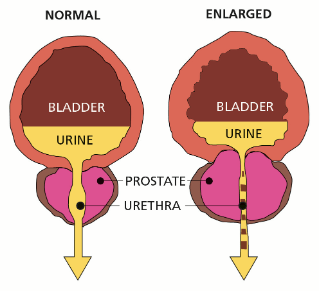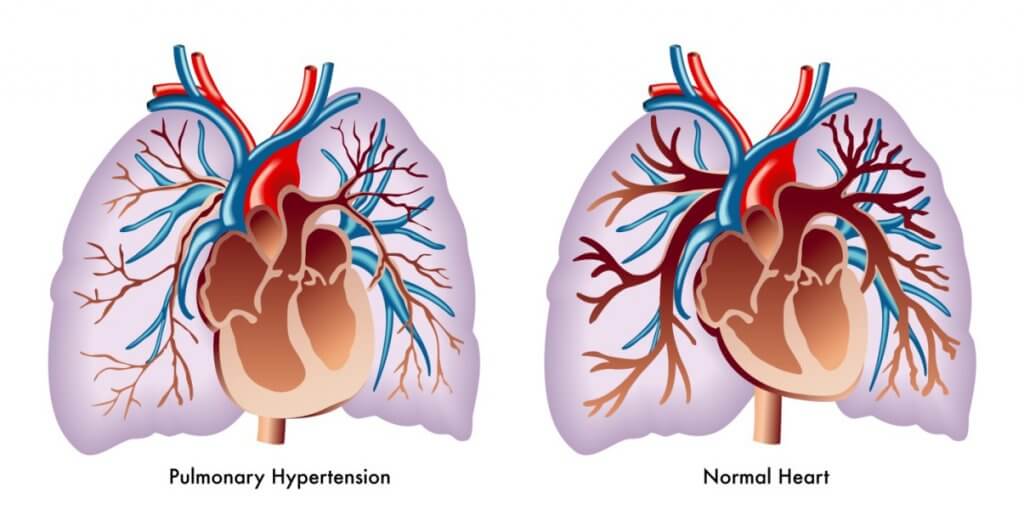What is Cialis (Tadalafil)?
Cialis (also known as Tadalafil) is the most effective and popular erectile dysfunction (ED) medication on the market. It is much alike its competitor, Viagra, however has much longer active life (36-48 hours compared to 4-6 hours) from a single intake.
How it works?

Tadalafil is a PED5 (phosphodiesterase-Type-5) Inhibitor. Like other PED5 inhibitors, Cialis increases the flow of blood to the penis, negating the main cause of ED. It is a viable solution unless ED is caused by non-physical issues, such as low libido, or psychological issues.
Cialis also has an effect of blood pressure lowering.
Cialis was also approved to be applied as a remedy for PAH (Pulmonary Arterial Hypertension, increased blood pressure in the lungs). Later it was also approved as a working solution for treating BPH (Benign Prostatic Hyperplasia, prostate enlargement) as it was found to lower pressure around the area.
What is benign prostatic hyperplasia?

BPH, or benign prostatic hyperplasia (aka benign prostatic hypertrophy) is a state of prostate gland abnormally enlarging. The gland embraces the pipe, which is called urethra, which allows the urine to be excreted. Prostate enlargement often causes urethra to be squeezed or blocked. This is where urinating related problems come from.
Benign prostatic hyperplasia happens to more than 50% of men as they grow older. To make you feel a bit better, BPH has no relation to cancer and cannot cause it. Neither does it have an effect on potency or fertility. Swollen prostate can be a very annoying experience, but that’s not something to worry too much about.
What are the reasons of BPH?
BPH is quite characteristic for aging men; it’s a usual state of things when hormonal balance changes.
How do you determine it’s BPH?
As mentioned before, you can recognize BPH via various problems accompanying urinating process:
- Having trouble starting and stopping urinating in full.
- Urge to urinate. To the extent it gets you up at night.
- A faint urine stream.
- A feeling that you did not completely empty your bladder even after urinating.
Diagnosing BPH
BPH is usually diagnosed by a doctor with the help of various physical examinations. Those include urinalysis (examination of urine), a rectal exam to understand the factual prostate size. Sometimes, a prostate antigen test is applied to exclude cancer (those two diseases are not related but may have similar symptoms).
BPH treatment
Self-treatment will not stop your prostate from enlarging, but may be helpful if you want to control the symptoms or weaken them.
Below are some tips that may be useful for addressing those symptoms:
- Try an interrupting technique. Urinate as long as possible, take a short break, and then start urinating again.
- Do not consume caffeine or alcohol. Those are diuretic agents and will force you to urinate more often.
- Consult your doctor regarding the medicines you may be using at the moment.
- Apply Cialis, as it is an effective and approved BPH treatment medicine.
In the worst case scenario when the symptoms persevere and are real bad, surgery may become a way out, subject to a prior advice from your doctor. But that really is a very rare occasion.
What is pulmonary arterial hypertension?

Pulmonary arterial hypertension (PAH) is a life-threatening condition that grows gradually worse as the time goes by. However, treatment is possible, which can help coping with symptoms to make life more comfortable. The condition is by no means a death sentence, which is proven by a gazillion of real life examples. People continue to live their normal lives even with PAH.
In essence, PAH is a specific condition (not to be confused with the regular high blood pressure) when there’s a high blood pressure in the blood vessels that connect heart to lungs. Therefore those microscopic lung arteries are constricted or obstructed. In the end that causes high blood pressure in lungs. Which in turn increases the strain on the heart. weakening and wearing out the heart muscle over time. It may lead to an unhappy ending in the form of heart failure, but then again, with preventive diagnostics applied, it will allow you to continue as usual.
What are the reasons of PAH?
PAH may either be unconditional (determined by the genetic predisposition, or, as is the case with idiopathic pulmonary hypertension, have no visible reason) or conditional.
In the latter case, any of the below may cause PAH:
- Congestive cardiac failure
- HIV
- Heavy drug use
- Liver diseases
- Some of the autoimmune conditions
- A congenital heart defect
- A number of lung diseases
- Blood clots in lungs
- Sleep apnoea
How do you determine it’s the PAH?
The trick with PAH is that symptoms may not even show themselves for a while. The main symptom is you get short of breath when being active. It develops slowly over time, getting worse. You get winded too much and too often and can no longer do some customary things you are used to.
Some other symptoms are:
- Chest pains
- Exhaustion
- Losing your consciousness occasionally
- You lower limbs often get swollen
Diagnosing PAH
If you suspect PAH and visit a doctor, get ready to answer some questions that may have relation to a possible diagnosis:
- Are you a smoker?
- Are heart or lung conditions a common thing for your family?
- When did you first notice the symptoms?
- Does anything affect your symptoms and to what extent?
- Are your symptoms permanent or temporary?
The concurrent physical examinations and tests may include the following:
- An ultrasound heart exam to check the pulmonary pressure.
- CT scan to check pulmonary arteries (or notice other lung issues that may be the reason for short breath).
- Ventilation/perfusion lung scan to spot possible blood clots in the lungs.
- An EKG to track the cardiac activity and check if there is a strain to the right side of heart (another warning sign of PAH).
- Spot X-ray to check your chest (may also find some other issues to cause your condition).
- Performance tests to see how your body, namely the lungs react to physical activity (level of oxygen, heartbeat, etc.).
- Blood tests to check some of the above reasons.
- The final test is a right side heart catheterization (inserting a catheter into a big enough vein, like the jugular vein in the neck, and threading it into the heart’s right side) to check the pressure and check if the pulmonary blood vessels are hard (a separate sub-test called the vasoreactivity test).
PAH treatment
PAH is a very individual condition and each separate plan of treatment will be determined by your personal specifics.
The primary step is dealing with the cause.
The obvious one is applying means to ease and improve the breathing that allows returning to the daily routine, such as oxygen therapy. Or blood thinners if blood clots are suspected. In case of severe condition, special medications that lower pressure in the whole body may be prescribed.
There are also dedicated treatment centers available for service, if none of the above works (if the doctor considers that to be appropriate). In such cases a targeted therapy may be applied
One of the most easily accessible solutions is Cialis pills. It’s an efficient remedy that however should first be approved by the doctor.
And of course, never forget to look after yourself – stay active (again, discuss the extent of physical activity allowed with your doctor), rest well, eat well and healthily.
You may also like: Cialis (Tadalafil): Do We Need Another Viagra?
Article provided by My Canadian Pharmacy expert Thomas Grimm, MD – http://www.mycanadianpharmacygroup.com







